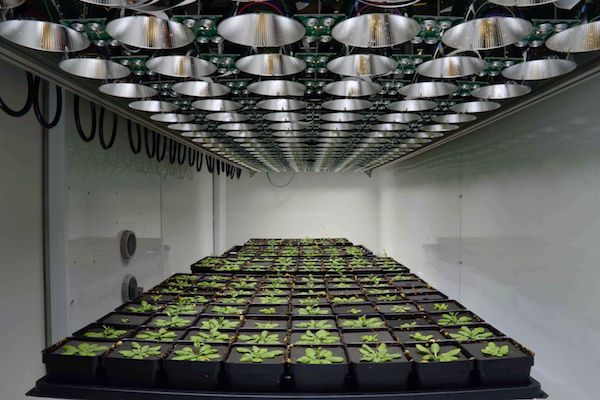Why CAAPP
The aim of Center for Advanced Algal and Plant Phenotyping (CAAPP) is to enable novel research directions for scientists and to address fundamental questions regarding the biology of photosynthetic organisms by focusing on improvement of photosynthetic productivity in rapidly changing environments.
Why the urgent need for improved photosynthetic productivity?
Our world is facing a confluence of unprecedented challenges that directly involve the plant sciences. The United Nations estimates that food production will have to increase by at least 70% over the next 30-50 years, whereas the increases in plant productivity seen in the early years of the “green revolution” have flattened out. At the same time, plants and algae are increasingly viewed as sources of fuel to supplant fossil fuels. Compounding these issues is the prospect of rapid climate change, depletion of nonrenewable resources, eutrophication of our waters, etc., that may severely diminish plant productivity.
There is thus an urgent need to develop highly productive and sustainable energy and food production under a rapidly changing environment. Traditional breeding of crops has already maximized many of the easily modifiable plant paramaters (e.g., crop architecture, plant growth cycle), leaving the (more challenging) energy storing reactions of photosynthesis and plant responses to environmental changes as the remaining opportunities for improvement. The key to improving productivity is increasing photosynthesis in a dynamic environment.

By the Kramer lab
How to improve photosynthetic productivity in rapidly changing environments?
Research conducted over the past century has produced a rich understanding of photosynthesis, from elegant crystallographic spectroscopy and biochemical studies that explain the fundamental biophysics and biochemistry of light-harvesting, to identifying the biochemical pathways that convert harvested light energy to chemical energy and the fixation of carbon.
However, this understanding is not an end, but a foundation from which a new set of grand challenges emerges. One of these challenges is to understand how the various components of photosynthesis are integrated to operate as a dynamic system that effectively responds to changing demands of the organisms and challenges from the environment that occur over wide time scales, from seconds to seasons.

By the Kramer lab
It has been estimated that up to 70% of plant productivity is lost due to environmental conditions that directly or indirectly impact photosynthesis (Boyer, 1982). Accordingly, considerable effort has been directed at determining mechanisms of photosynthetic acclimation to environmental factors. However, to date, most of this knowledge has come through growing plants in highly controlled growth chambers under a given condition, or exposing plants to a change in a single condition, and then following the effects over time on the photosynthetic parameter under study. While this reductionist experimental design is extremely powerful, it is becoming increasingly apparent that it is unlikely to detect novel biochemical and regulatory mechanisms that have important roles in nature.
The CAAPP will allow us to measure a wide range of photosynthetic parameters, in real-time, in response to an array of constant and fluctuating environmental conditions. This technology will then be used to identify biophysical processes and genes that have key roles in photosynthetic acclimation and contribute to photosynthetic efficiency and productivity.